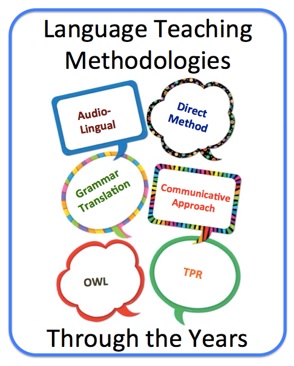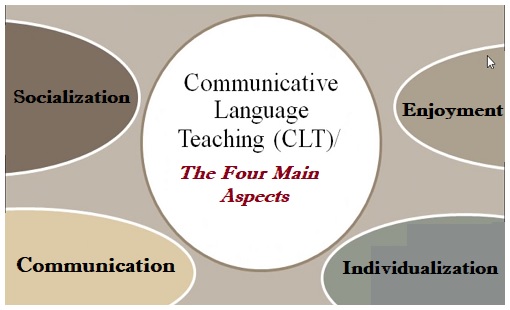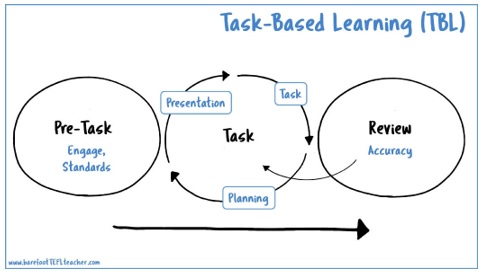
Top 5 Most Popular ESL Teaching Techniques Every English Language Teacher Should Be Aware Of
1st September 2023How amazing would it be, if you had handy ESL teaching strategies that you can fall back on over and over again? English as a Second Language (ESL) teaching methods have evolved over the years, catering to diverse learners' needs and language acquisition goals. Therefore, imagine having teaching hints that you can constantly recall and are just seconds away from your mind’s reach. Thus, if you ever feel like being caught in a communication conundrum, these methods provide you with effective tools to engage students and facilitate language learning. Read on to delve into five popular ESL teaching methods to create dynamic and impactful language learning environments.
5 ESL Teaching Methods You Will Reach Out For Over And Over Again

Source: wlclassroom.com
If you are in search of ESL teaching approaches that will rock your world, take a look:
1. Communicative Language Teaching (CLT)
Communicative Language Teaching is a student-centered approach that prioritizes meaningful communication over rote memorization. The primary goal of CLT is to enable students to use language in real-life situations. In this method, you design activities that encourage students to interact, negotiate meaning, and express themselves. Pair and group work, role-playing, and simulations are common techniques used in CLT classrooms.

Source: elttguide.com
One of the strengths of CLT is its focus on contextualized language use, which equips students with the ability to navigate various communicative situations. Additionally, CLT fosters the development of listening, speaking, reading, and writing skills in an integrated manner, mirroring real-world language use.
Hey, do you follow us on Social Media? We regularly share upgraded educational content, tips, feedback and more. Check us out by clicking the profiles here -
2. Task-Based Or Inquiry-Based Learning
Task-Based Language Teaching revolves around the idea that language is best acquired through completing meaningful tasks. You can create activities or tasks that require students to use language to achieve a specific goal. These tasks can range from planning a trip to creating a presentation about a chosen topic. TBLT places students at the center of the learning process, encouraging problem-solving and critical thinking.

Source: barefootteflteacher.com
TBLT not only enhances language proficiency but also equips learners with valuable life skills. As they work on tasks, they are motivated by the real-world relevance of their efforts. This method encourages authentic language use and helps learners build confidence in their language abilities.
3. The Direct Method
The Direct Method focuses on teaching language directly, avoiding the use of the student's native language. This method emphasizes immersion in the target language, using visual aids, gestures, and context to convey meaning. Grammar is taught inductively, with students discovering patterns and rules through exposure to examples.
The Direct Method aims to create an environment that mirrors natural language acquisition, where students learn through context and use. While this method has faced criticism for its potential limitations in teaching complex grammatical structures, it remains effective in teaching practical, everyday language use.
4. Audio-Lingual Method
The Audio-Lingual Method draws inspiration from behaviorist psychology and emphasizes habit formation through repetition and imitation. Language learning is viewed as a process of acquiring a set of language habits. This method heavily relies on drills, repetition, and pattern practice to help students internalize language structures.
While the Audio-Lingual Method has lost some prominence over the years, it still holds value in certain contexts. It is particularly effective for students who need to focus on accurate pronunciation and grammatical structures. However, you can often supplement it with other methods to provide a more comprehensive language-learning experience.
5. Total Physical Approach
Total Physical response is a language acquisition method developed by Professor James Asher. This approach uses a combination of physical actions and language to engage students in their language-learning process. It is a fairly low-stress strategy that drives the learners to success. The students feel no pressure to speak while using TPR. Instead, they simply listen and respond physically.
TPR often acts as a great precursor to verbal communication and there are many ways in which you can use this within a classroom. Even though it functions best when you use it as warmers to make your students get up and moving, you can also use it during times when you feel your class is getting mundane and repetitive.
Delve Deeper Into ESL With These Methods
The strategies listed above do not have to be the ultimate list as you can find your method along the way that works for you. These five popular ESL teaching methods offer you a diverse toolkit to effectively facilitate language learning. Each method brings its strengths and approaches to the classroom, catering to different learning preferences and objectives. A successful ESL teacher has completed a TEFL Course in Thailand and can draw from these methods to create engaging, interactive, and effective language learning experiences.
We believe education should be accessible for everyone. That’s why we don’t charge for our blogs. Find the right course for you and try out the course. WhatsApp us at: +6621056101. You can also mail us at act@asiancollegeofteachers.com.

